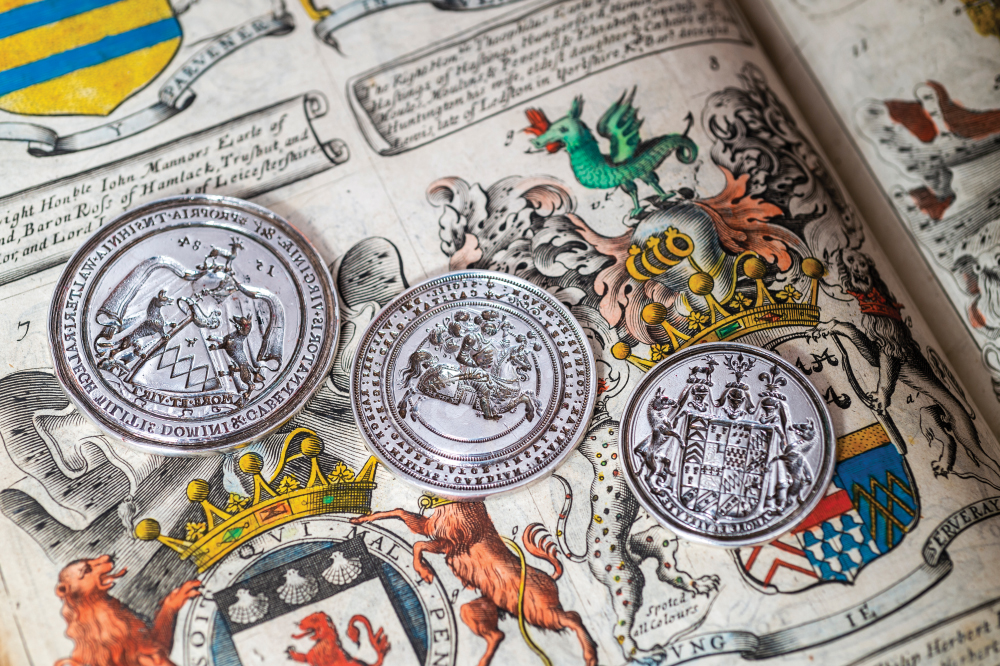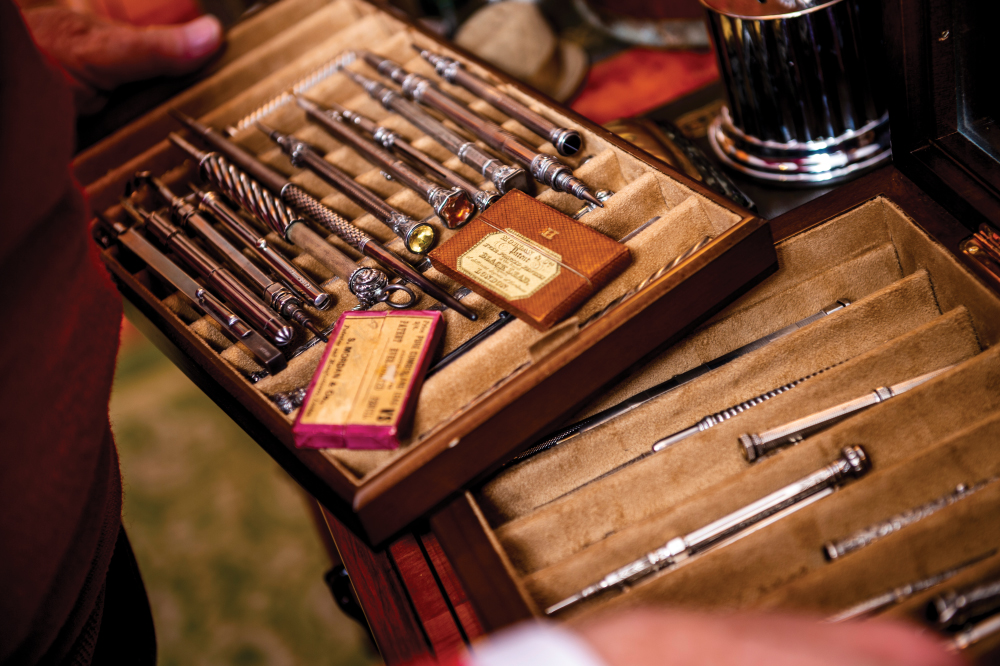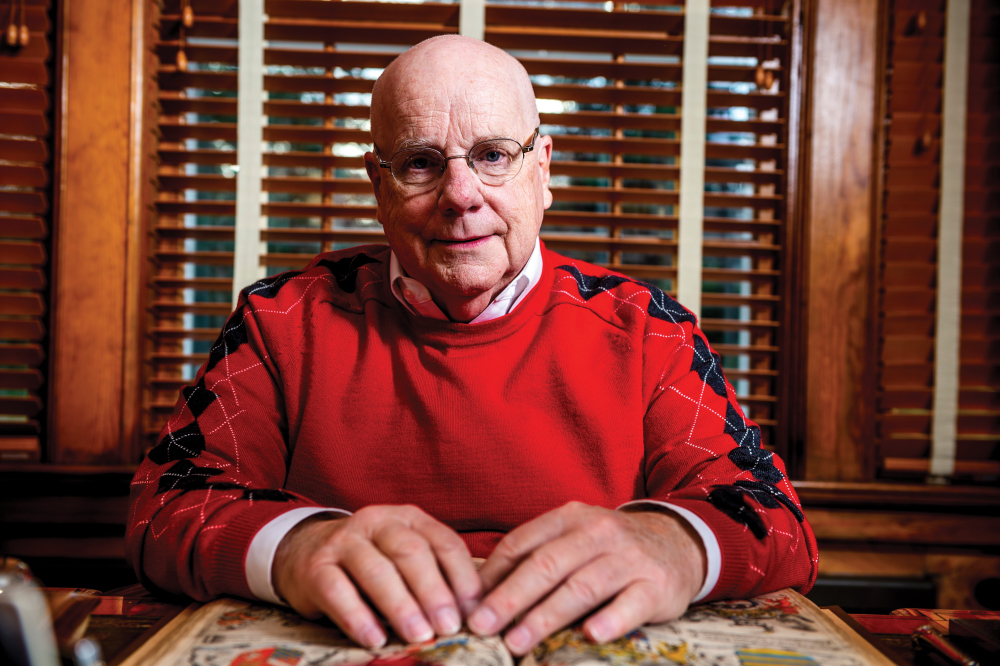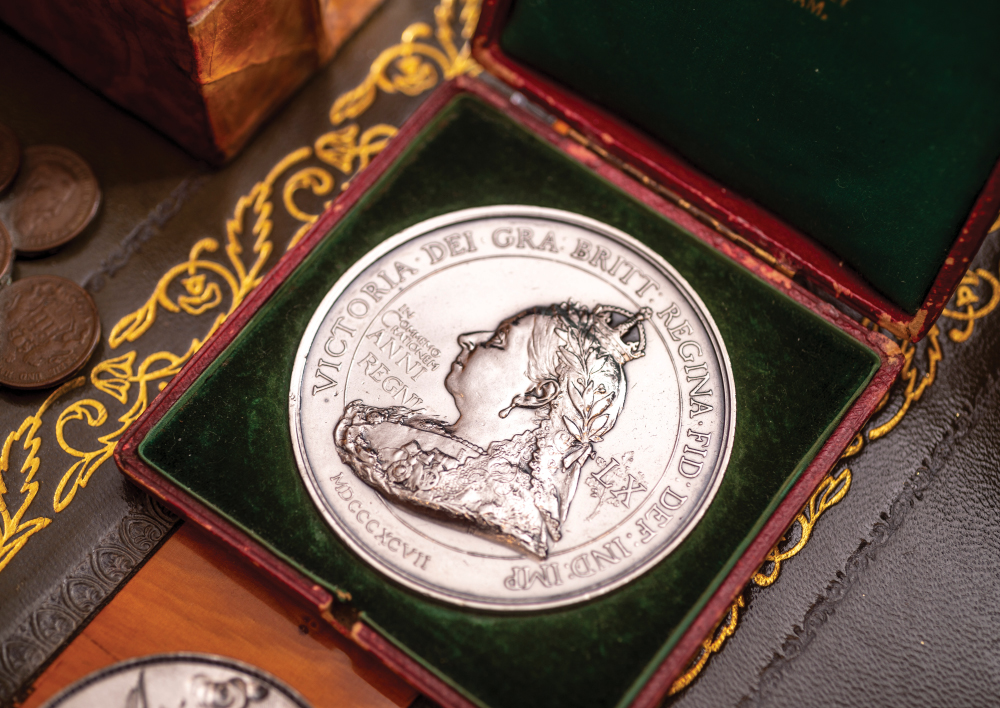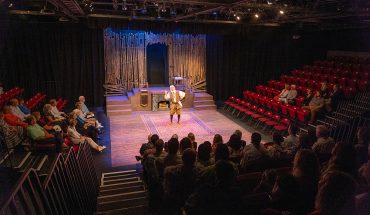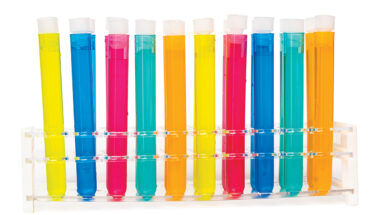This Hayes Barton history buff finds that artifacts like wax seals and coins bridge history and design — and he has hundreds of them.
by Katherine Snow Smith | photography by Bryan Regan
“They say if you have three of anything it’s a collection,” Terry Henderson says with a chuckle. “So I guess I qualify as a collector.”
The laugh contradicts the breadth of what he’s gathered: a distinctive assemblage of over 400 intricately carved silver and metal seals and wax impressions, called intaglios, from the 18th and 19th centuries. The intaglios range in size from a half-inch to 1 ½ inches — each a miniature work of art — and made from an intricately carved seal or stamp. “There are faces, mythical figures, and all manner of classical Greek and Roman designs,” he says.
Prized within this collection are three rare replicas of Sir Walter Raleigh’s seals. When you see them, you can just picture him in London in 1592, holding a flame to a stick of wax, dripping a small red puddle onto the envelope containing a newly penned letter to his secret wife, Elizabeth Throckmorton. Picking up the ornately cut metal seal, he’d press it into the wax to safeguard his words from prying eyes.

“As a native of North Carolina and because of the place that Sir Walter Raleigh holds in the history of the state, I thought they were very interesting,” Henderson says. “And, of course, Hayes Barton, where I live, is named for Raleigh’s birthplace in Devon, England.”
Sir Walter Raleigh used different seals for various roles in his life: Governor of Virginia (though, just like the city named after him, he never set foot there), Warden of the Stannaries, Governor of the Island of Jersey, and Captain of the Queen’s Guard. He also had a personal seal. In his era, wax seals were used to designate official documents as well as to secure letters, writing tablets, boxes, and even doors.
The original seals used to make the wax impressions were often crafted out of precious and semiprecious gemstones and used in signet rings or pendants. The concave image was cut into the stone like a mold. The gemstones were so hard that normal engraving tools could not be used, so the cuts were made by lathes powered with a bow or foot pedal, Henderson explains. The concave (negative) carving would be pressed into a red wax sulphur mixture rendering a convex (positive) image. Sometimes the intaglios would be made of white paste instead of red wax.
The resulting hardened intaglios were often collected by sons of wealthy families as they completed their education. They’d use them to commemorate the various stops on months-long, sometimes years-long, grand tours of the capitals and ancient sites of Greek and Roman civilizations. These collections of intaglios were often cataloged in books created especially for their display. “The classics and the arts come together in these small treasures,” he says. “I would come across them for sale on eBay, from other collectors or from antique dealers. You’d see them individually or two or three together at a time.”
The British Museum made just 100 copies of three of Sir Walter Raleigh’s 16th-century seals in the late 19th century. The museum then sold the seals to raise money to buy back the original seals from collectors, who had acquired them through an earlier auction. Over the decades, they’ve continued to be a collector’s item.
Early on, Henderson developed a fascination with history and an eye for spotting rare medals, seals, and intaglios. He actually found one of his most prized pieces as a teenager at an antique store in his hometown of Hickory, in the western part of the state.
“I call it my Queen Vicky medal,” he says. The commemorative 3-inch medallion was made and sold for the Diamond Jubilee celebration of Queen Victoria’s 60 years on the throne in 1897. At the time, she was the longest-reigning British monarch. The solid silver medallion is a triumph of the medallic arts, featuring the queen’s profile on one side and, on the other, the Royal Coat of Arms centered in the midst of all the flags of the the British Empire at the time.
“I probably paid less than $100 for it,” Henderson says. “But that was an incredible amount of money for me as a teenager in the 1960s.”
About 20 years later, Henderson and his wife were at a shop in Mount Vernon, Virginia, the homeplace of George Washington, where he came across another favorite find: a replica of the Great Seal of the United States reproduced from a seal that Washington had owned. These replicas were produced in the late 1860s as a way for the Mount Vernon Ladies Association to raise money to buy the privately-owned Mount Vernon estate from Washington’s heirs. (It worked: they bought it back for $200,000, a considerable sum at the time.) Their fundraising efforts allowed Mount Vernon to become the first organized house museum in the country.
Henderson, who moved to Raleigh in 1987, recently headed up the centennial celebration for his neighborhood of Hayes Barton. In a full-circle moment, he commissioned a new seal from Raleigh Notary Seals for the occasion, depicting the one-time trolley stop at the corner of Harvey Street and Glenwood Avenue. It was embossed in gold foil on commemorative programs for the event — a modern take on the historic wax seals that captured his interest decades ago.
__
This article was originally published in the March 2022 issue of WALTER Magazine.

